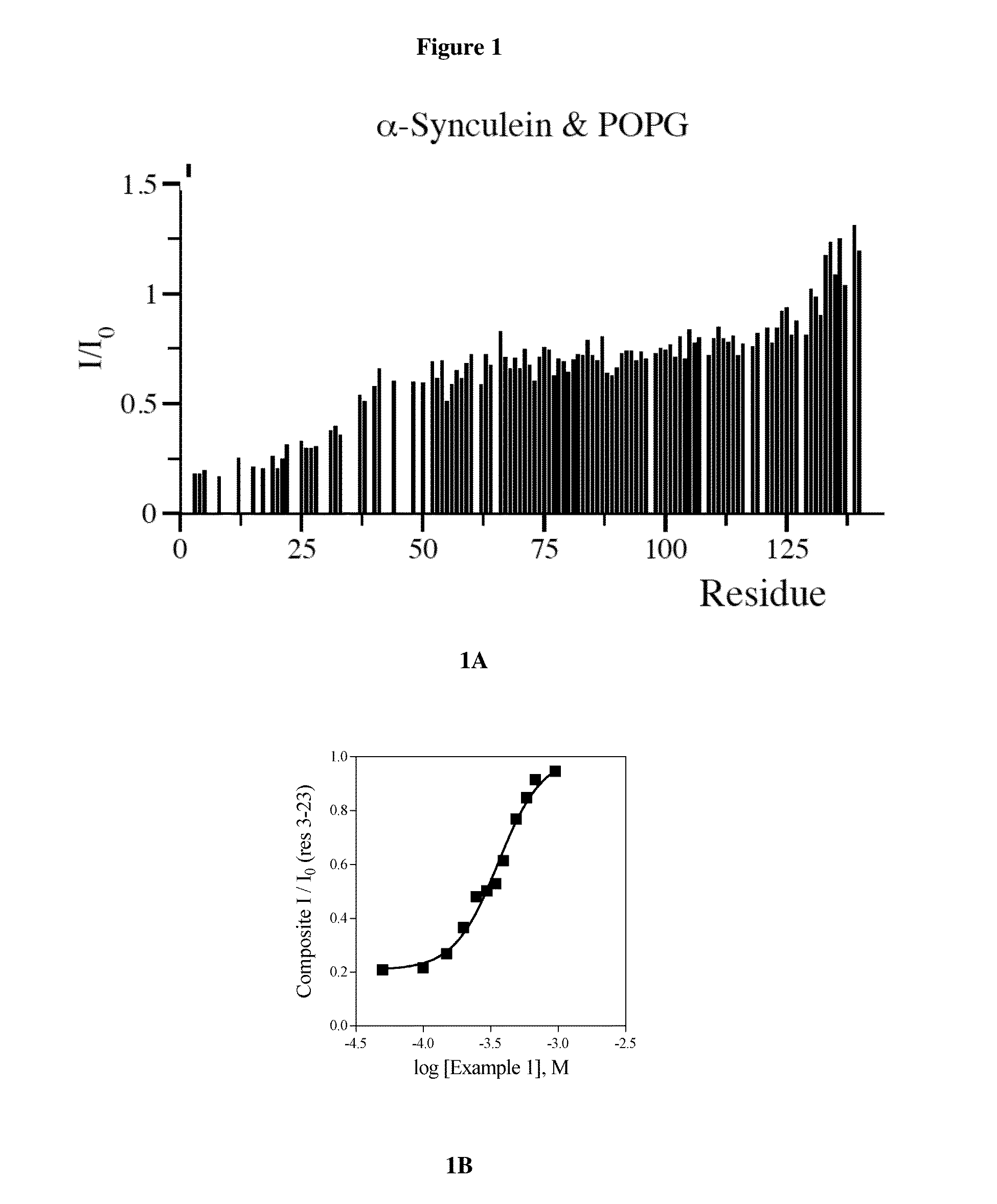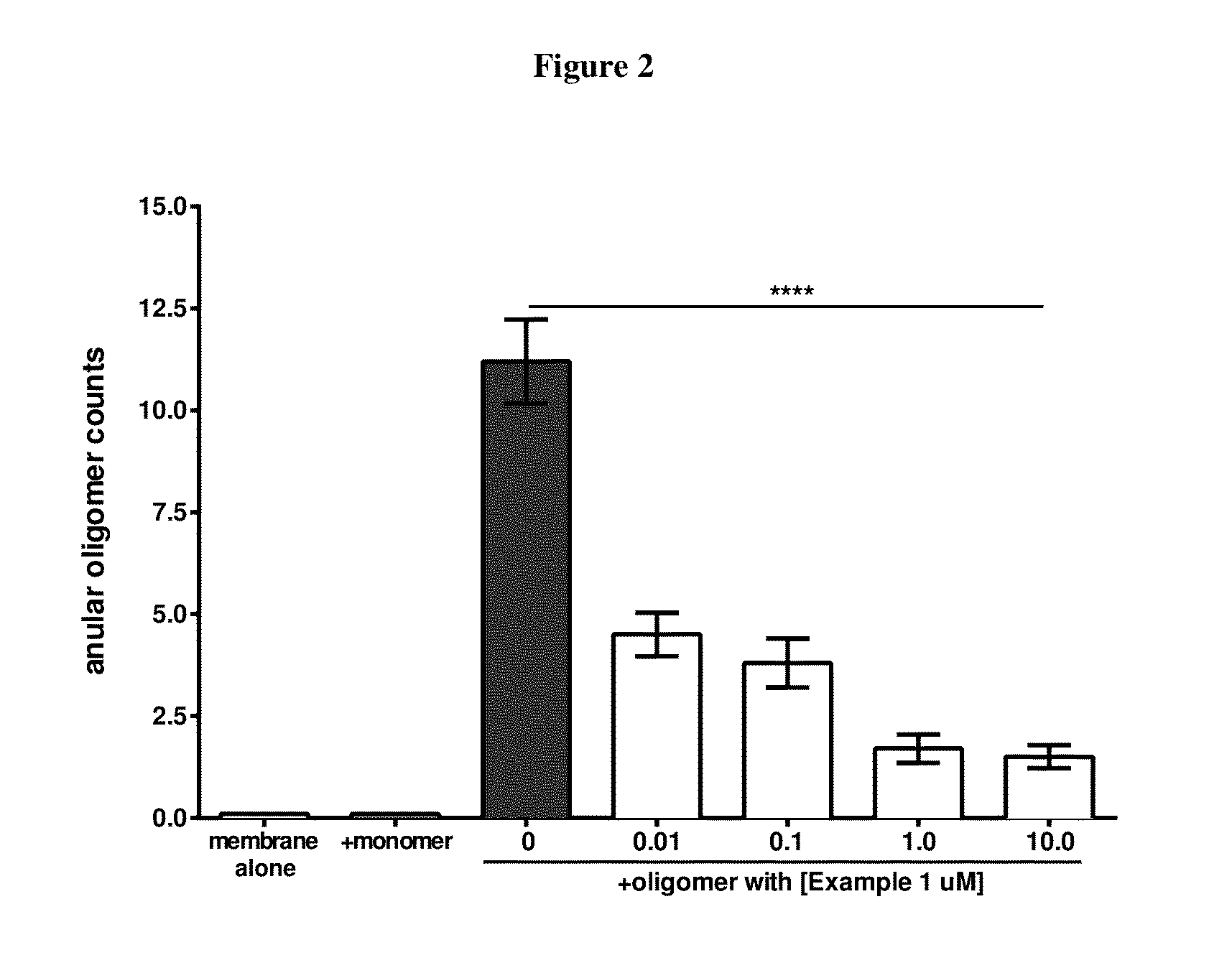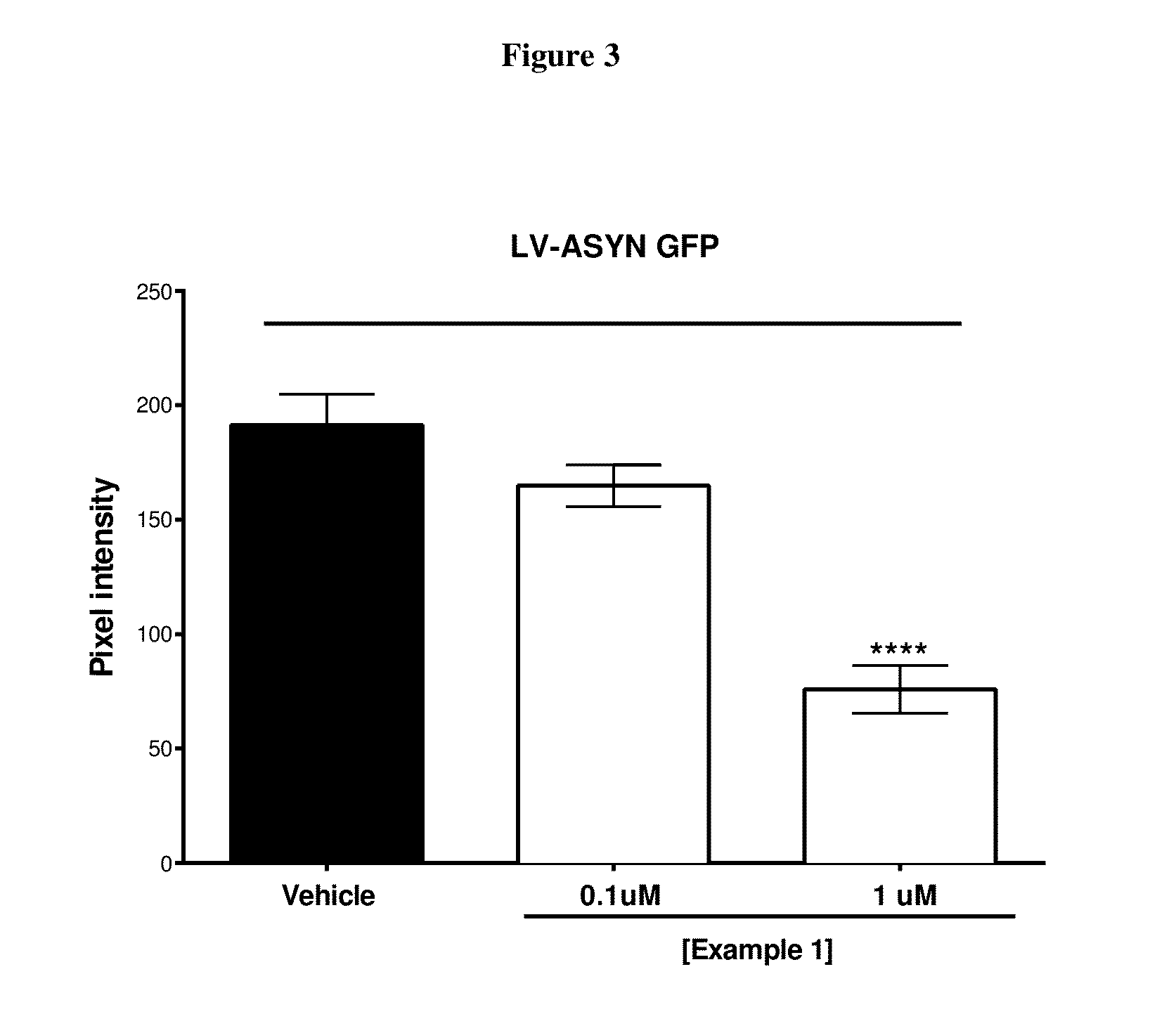Heteroaryl amides as inhibitors of protein aggregation
a technology of heteroaryl amide and inhibitors, applied in the field of heteroaryl amide derivatives, can solve the problems of reducing the neurotoxic effect of aggregated proteins, interfering with protein transcription, autophagy, pore formation, release and/or propagation,
- Summary
- Abstract
- Description
- Claims
- Application Information
AI Technical Summary
Benefits of technology
Problems solved by technology
Method used
Image
Examples
example 1
N-(1-(1H-Indol-3-yl)hexan-2-yl)-2-(4-methylpiperazin-1-yl)thiazole-5-carboxamide
[0108]
[0109]Step 1.
To a solution of compound 1A (6 g, 45.8 mmol) in dry 1,2-dichloroethane (80 mL) was added AlCl3 (18.3 g, 137.4 mmol) at 0° C. The mixture was warmed to 25° C. and stirred for 30 min. The mixture was cooled to 0° C., and compound 1B (6.2 g, 51.3 mmol) was added dropwise. The mixture was stirred at 25° C. for 48 h. The reaction mixture was poured into ice water slowly and extracted with dichloromethane (DCM, three times (3×)). The organic layer was washed with brine (3×), dried over Na2SO4 and concentrated. The residue was purified by column (20:1 petroleum ether / EtOAc) to give compound 1C (4.8 g, 49%) as a yellow solid. 1H NMR (400 MHz, CDCl3) δ 8.16 (br s, 1H), 7.39 (d, J=8.0 Hz, 1H), 7.37 (d, J=8.0 Hz, 1H), 7.23 (t, J=7.2 Hz, 1H), 7.15 (t, J=7.2 Hz, 1H), 7.15 (s, 1H), 3.83 (s, 2H), 2.50 (t, J=8.8 Hz, 2H), 1.54-1.63 (m, 2H), 1.24-1.29 (m, 2H), 0.86 (t, J=7.6 Hz, 3H).
[0110]Step 2.
[0111]...
example 2
N-(2-(1H-Indol-3-yl)ethyl)-2-(4-methylpiperazin-1-yl)thiazole-5-carboxamide
[0116]
[0117]Step 1.
A solution of NaOH (4.1 g, 102 mmol) in H2O (100 mL) was added dropwise to a solution of compound 2A (20 g, 84.7 mmol) in tetrahydrofuran (THF, 100 mL) at 0° C. The mixture was stirred at 10° C. for 1 h. The mixture was neutralized with HCl (6 M) and extracted with EtOAc (3×). The organic layer was washed by brine, dried over Na2SO4, and concentrated to give compound 2B (17.7 g, 100%) as a yellow solid. 1H NMR (400 MHz, DMSO-d6) δ 8.21 (s, 1H).
[0118]Step 2.
1,1-Carbonyl-diimidazole (2.06 g, 12.75 mmol) was added to a mixture of compound 2B (2.6 g, 12.5 mmol) in THF (16 mL). The mixture was stirred for 1 h at room temperature, and then was treated with triethylamine (TEA, 2.53 g, 25 mmol) and compound 2C (2 g, 12.5 mmol). The resulting mixture was stirred at room temperature for 12 h. The mixture was diluted with EtOAc, washed with 1M HCl (2×) and brine, then dried over Na2SO4, and concentrat...
example 3
N-(1-(1H-Indol-3-yl)hexan-2-yl)-2-(piperazin-1-yl)thiazole-5-carboxamide
[0120]
[0121]Step 1.
1,1-Carbonyl-diimidazole (4.04 g, 24.96 mmol) was added to a mixture of compound 2B (5.19 g, 24.96 mmol) in THF (40 mL). The mixture was stirred for 1 h at room temperature and then was treated with TEA (7.56 g, 74.88 mmol) and compound 1D (5.4 g, 24.96 mmol). After 12 h at room temperature, the mixture was diluted with EtOAc, washed successively with 1 M HCl (2×) and brine, dried over Na2SO4, and concentrated to give compound 3A (7.74 g, 76%) as a yellow solid. 1H NMR (400 MHz, MeOD-d4) δ 8.36 (d, 1H, J=8.4 Hz), 7.97 (s, 1H), 7.56 (d, J=8 Hz, 1H), 7.30 (d, J=8 Hz, 1H), 7.06 (t, J=7.2 Hz, 1H), 7.05 (s, 1H), 6.95 (t, J=7.2 Hz, 1H), 4.31-4.28 (m, 1H), 3.0-2.97 (m, 1H), 1.75-1.50 (m, 2H), 1.45-1.25 (m, 4H), 2.22 (t, J=6.8 Hz, 3H). MS: (M+H+): 406, 408.
[0122]Step 2.
To a mixture of compound 3A (2 g, 5.7 mmol) and K2CO3 (1.77 g, 12.8 mmol) in CH3CN (12 mL) was added compound 3B (0.92 g, 4.9 mmol). A...
PUM
| Property | Measurement | Unit |
|---|---|---|
| Pharmaceutically acceptable | aaaaa | aaaaa |
| Configuration | aaaaa | aaaaa |
Abstract
Description
Claims
Application Information
 Login to View More
Login to View More - R&D
- Intellectual Property
- Life Sciences
- Materials
- Tech Scout
- Unparalleled Data Quality
- Higher Quality Content
- 60% Fewer Hallucinations
Browse by: Latest US Patents, China's latest patents, Technical Efficacy Thesaurus, Application Domain, Technology Topic, Popular Technical Reports.
© 2025 PatSnap. All rights reserved.Legal|Privacy policy|Modern Slavery Act Transparency Statement|Sitemap|About US| Contact US: help@patsnap.com



